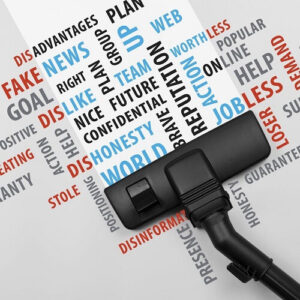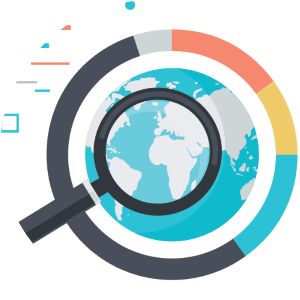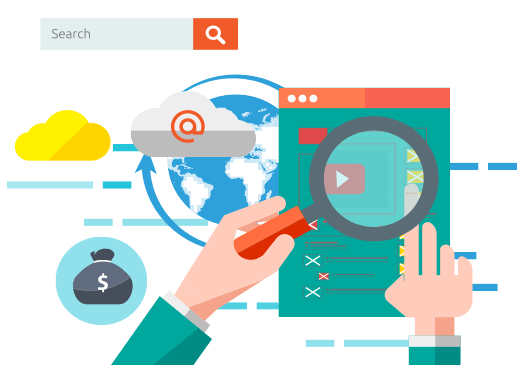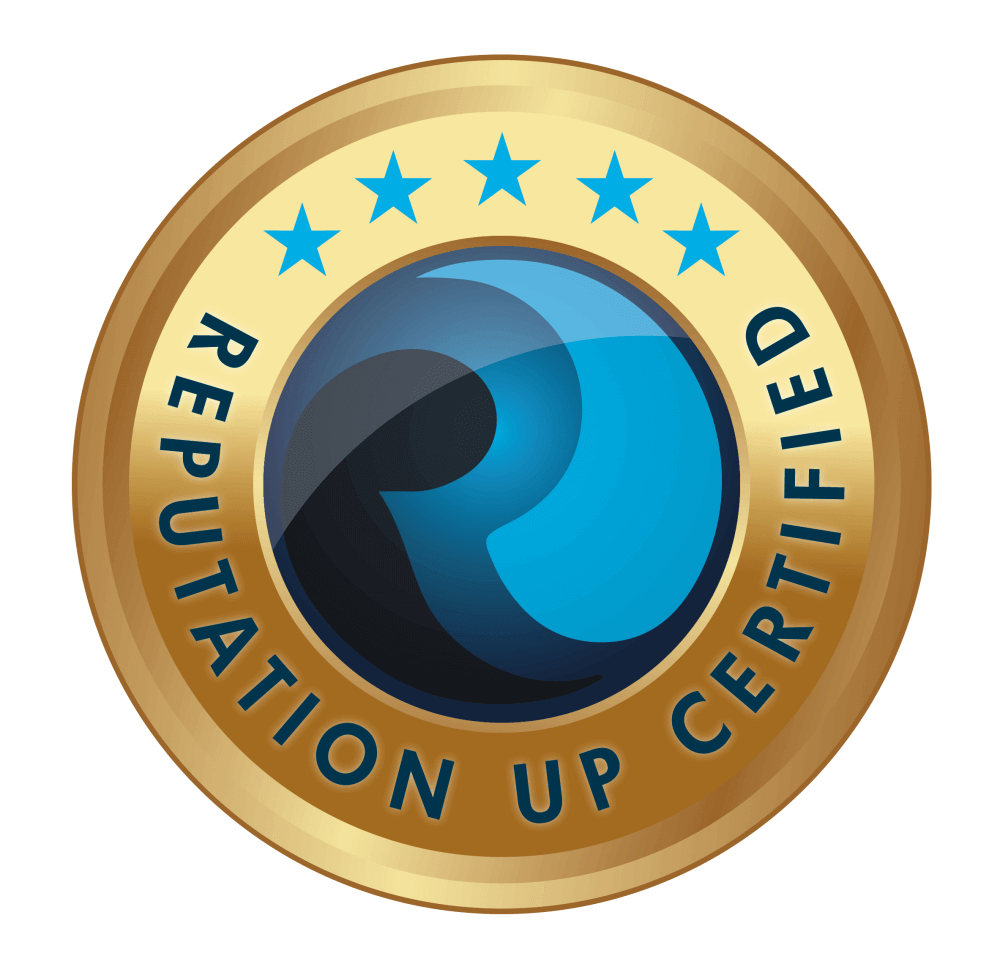Risk Intelligence: what is it, how is it measured, and why is it important? What does its management include, and who is responsible for identifying the risk?
Index
Need help managing and improving your online reputation?
60% of users say they don’t trust people or businesses who receive negative comments or reviews
Definition of risk intelligence
Risk intelligence is a systematic approach to identifying, assessing, and managing an organization’s risks.
It is one of the phases before crisis management.
This method collects and analyzes information about people, places, and events for intelligence purposes.
In this context, intelligence refers to information obtained after examining an organization’s sources.
The intent is to assess the risk and manage it adequately.
Risk intelligence has been used in many domains and fields, such as business administration and management, public relations, insurance, architecture, and engineering.
According to Leo Tilman, risk intelligence is:
‘The organizational ability to think holistically about risk and uncertainty, speak a common risk language, and effectively use forward-looking tools to make better decisions.’
Risk intelligence is an approach to decision-making that uses the information gathered from multiple sources to assess and address current or potential risks.
Risks assessment is based on the following:
- Knowledge and experience;
- Data analysis (Business Intelligence);
- Social media;
- Qualitative and quantitative assessment tools.
According to the Deloitte report on Risk intelligence issues in global energy and resources industry, these two techniques are not balanced.

88% of organizations surveyed currently use qualitative self-assessments to perform risk analyses.
Predictive risk analytics and quantitative methods are less widespread.
What is risk intelligence?
Risk intelligence is not new.
Indeed, risk intelligence is one of the oldest forms of business analysis.
It helps identify and mitigate potential threats to an organization’s resources, people, and corporate reputation.
Risk intelligence identifies and quantifies the risks associated with a specific project or event.
There are many different approaches to risk intelligence.
One is to identify all the hazards a project or event might face and then prioritize them according to their severity, likelihood, and persistence.
A risk prioritization process might look like this:
- Risk identification.
The first step is identifying potential risks to a project or event.
- Prioritization.
Each risk is prioritized based on severity, the likelihood of occurrence, and the long-term outlook.
- Risk calculation and value.
Each risk implies a quantifiable economic loss or benefit; thus, businesses must calculate their current value.
- Risk comparison.
All risks are compared in terms of net current value over ten years.
- Risk classification
Risks with higher expected benefits are given more weight than low-risk scenarios.
Risk intelligence applies to many different fields.
Since it is used by governments, the army, and businesses to support online reputation management, it has grown in popularity in recent years.
How does risk intelligence work?
There are two risk intelligence systems:
- Internal Risk Intelligence: identifying an organization’s risks and threats.
Organizations can use it to identify the most critical risks and threats that require attention;
- External Risk Intelligence: is used to identify risks and threats outside the organization.
It helps organizations determine what factors to consider when making decisions about their business operations.
In any case, the two strategies share several vital steps:
- The first step in developing a risk information system, or any other type of security strategy, is to understand the organization’s or individual’s needs;
- The second step is to understand what information is needed for the analysis from internal and external sources of data;
- Then you must determine what data is required and adequate, including metadata;
- The fourth step is understanding how to organize and store the data.
Risk intelligence evolves into natural risk management, which includes distinct phases.
The primary distinction between risk intelligence and risk management is that risk intelligence has a predictive nature.
According to an IBM report, 53% of companies use a well-crafted risk management plan rather than a proactive risk intelligence plan.

What does risk management include?
Companies need risk information because it helps them identify, assess, and manage risks.
It also helps them understand how risks are correlated.
Therefore, risk intelligence consists of the following:
- Identifying opportunities and threats to the company’s strategies and operations;
- Assessing the impact a risk could have on revenue, costs, reputation, or other critical success factors;
- Prioritizing risks based on their potential impact;
- Enforcing plans to mitigate or manage these risks.
Risk intelligence is a new approach to risk management in response to the changing nature of threats and the parties’ changing needs.
Do you want to check your partner’s financial reputation?
ReputationUP analyzes your partner’s financial reputation and sends you a detailed report
Enterprise risk management
Risks are potential internal or external threats to the company’s assets or operations.
Internal risks may be attributable to employees or malfunctions within the management system.
External risks are caused by factors outside the company, such as natural disasters, competitors, or government regulations.
The IBM report identifies the most relevant external factors:
- Market factors: 29.3%;
- Macroeconomic factors: 15%;
- Regulatory concerns and financial compliance: 15%;
- Technology: 11.7%;
- Talent/skills: 6.9%;
- Socio-economic factors: 5.5%;
- Globalization: 5.1%;
- Environmental issues: 3.8%;
- Geopolitical factors: 3%.

Each risk is assessed according to likelihood (e.g., low, medium, or high), severity, and consequences, i.e., which area or business sector it will affect the most.
A formal root cause analysis is required for each risk.
It helps identify the risk’s causes and develop a mitigation strategy.
When a company controls a specific business branch, having a separate compliance department is optional.
In these cases, they may have different units reporting on risk levels.
However, effective models typically include this option.
Do you want to protect your reputation from haters and fake news?
You risk losing 22% of your revenue if potential customers find a single negative link on Google’s first page
Brand and reputation management
Risk management can help a company’s offline and protect online reputation.
Risk intelligence measures a company’s ability to anticipate and respond to risks.
The better your response, the more confident your customers and investors are.
Crisp Thinking sees digital chatter as a significant source of risk information.
94% of respondents claim that chatting online limits their ability to react to risks.

As a result, an effective response allows you to improve brand protection by managing all legal and image aspects of the brand.
Crisis management
Risks that manifest as harmful tangible events for the company might lead to crisis management.
With a team of experts assigned to each case, ReputationUP specializes in crisis management for individuals and businesses.
It recently obtained the ISO 9001 certification, which validates the company’s quality management system.
As previously stated, risk intelligence’s predictive nature makes it critical, even in the early stages of crisis management.
If the assessments made during the risk intelligence forecasts are correct, it will be easier to handle the confirmed risks.
Businesses can use risk intelligence to identify the most dangerous risks, potential consequences, and likelihood of occurrence.
Some companies use risk intelligence as part of their due diligence strategy when planning to finance another company or enter an agreement.
Risk intelligence also helps in decision-making when developing new products or services.
Risk intelligence elements
Each of the following risk intelligence components is crucial:
- Risk awareness;
- Risk understanding;
- Risk evaluation;
- Risk estimation;
- Risk assessment;
- Risk response.
These components, like the reputational funnel used for online reputation protection, must be considered as a whole: if even one of them falls, the entire chain suffers.
Risk awareness
Risk awareness is the recognition of all threats that could impact your business.
The question is: has my company considered all of the potential existing risks?
Businesses must concentrate both on higher-predicted risks but also on lower-predicted hazards.
In this regard, 88% of Crisp Thinking respondents believe that what is said online is critical for identifying and mitigating risks before they become crises.

For this reason, social media integration into source analysis is essential.
ReputationUP has patented software for monitoring the Surface, Dark, and Deep Web.
The RepUP Monitoring Tool combines Big Data and Artificial Intelligence to analyze what people say online about your personal or corporate brand.
Risk understanding
Once identified, businesses must thoroughly comprehend the risks.
This point is primarily based on experience and practical knowledge of risk information and relevant mitigation strategies.
Risk evaluation
Businesses must evaluate known risks.
Each risk has a measurable impact on the company as a whole or only on specific functions or units.
Risk evaluation is primarily based on an analysis of risk severity, i.e., how they will affect operations.
Risk estimation
Here we get to the heart of the predictive aspect of risk intelligence.
Risk estimation helps determine the significance of risks and their magnitude.
A realistic risk prediction should not be fueled by unrealistic optimism, as this would expose the company to the worst-case scenario.
For more objectivity, businesses often outsource this process and competencies.
Do you want to delete personal and private information from the web?
ReputationUP guarantees the elimination of any personal and private information from any Web platform
Risk assessment
Risk assessment is when the specific impact of the given risk is determined.
Unlike the risk evaluation phase, we do not consider the severity parameter.
In a nutshell, it entails determining which individuals and corporate assets are vulnerable to risk.
Risk response
Risk response does not mean reacting after a threat has become real.
The proper risk response begins with planning, practice, and employee training.
As a result, the company provides and equips itself with the tools it needs to respond effectively to risk.
Internal and external communication between the organization’s departments is critical at this stage.
How can we measure risk Intelligence?
In the context of risk intelligence, risk is a possible outcome that poses a danger to an individual or an organization.
According to the CSRC, the risk is:
‘A measure of the extent to which an entity is threatened by a potential circumstance or event, and typically a function of (i) the adverse impacts that would arise if the circumstance or event occurs; and (ii) the likelihood of occurrence.’
Risk is measured by evaluating the impact of the outcome and the likelihood that it will occur.
Using this approach, organizations estimate each risk to prioritize their mitigation efforts.
They can determine the total cost of risk (TCOR), described by Milliman as:
‘The sum of all aspects of an organization’s operations that relate to risk, including retained (uninsured) losses and related loss adjustment expenses, risk control costs, transfer costs, and administrative costs.’
TCOR might include a wide variety of elements, but let us see three macro-areas:
- Variable costs, which are subject to change;
- Fixed costs which are not directly impacted by the risk occurrence;
- Administrative and risk control costs, depending on the risk and the company’s management system.
When driving a reputational risk analysis, variable costs are the most controllable and comprise about 65-80% of the TCOR.

What is a risk Intelligence map?
A risk intelligence map serves as a guide for company personnel to broaden their perspective on risks and improve their ability to respond to them.
The risk intelligence map is a graphical representation of all organizational risks and threats.
This tool helps identify and understand an organization’s risks.
You can create a risk intelligence map by entering all the organizational hazards and threats and grouping them according to their similarities.
These similarities could relate to the risks’ causes, the sectors they will affect, or the effects they will have.
You can create this map during a brainstorming session with your team or by reviewing previous incidents to see what patterns arise.
Here is an example of a risk intelligence map.

You can generate multiple intelligence risk maps for your organization.
They will help your team understand how various risks or threats affect different areas of the organization.
A map could demonstrate how system attacks affect other company units, such as marketing or human resources.
Another map could show how cyberattacks affect each company’s department or division.
Why is risk intelligence critical?
Risk intelligence is crucial in reducing the risk of potential harm to an organization or an individual.
It is also necessary for sound decision-making and problem-solving.
Its application also includes financial reputation.
The primary goal of risk managers is to identify, assess, and mitigate risks before they have an adverse effect.
The first step in reducing risk is to warn of a possible threat.
With the expansion of digital media, risk factors have skyrocketed, leaving businesses increasingly vulnerable.
Predictive risk intelligence is a potent prevention tool available to entrepreneurs.
Why businesses need risk intelligence
Risk intelligence aims to provide a comprehensive view of risk so businesses can mitigate risk while remaining competitive.
PWC’s Global Risk Survey Report shows that 65% of business executives are willing to increase spending on risk intelligence technologies.

75% intend to spend more on data analytics and process automation.
72% are investing in risk monitoring and identification technology.
In short, a combination of qualitative and quantitative strategies is required.
Three forms of qualitative approaches are frequently applied in business:
- Opinions;
- Experience;
- Intuition.
On the other hand, the quantitative methodology has always been grounded in statistics and data analysis.
This technique helps in supplying quantifiable information about the risk’s effectiveness.
However, this is a limited approach from a side perspective; hence, the two must be combined.
Who is responsible for identifying risks?
The risk intelligence department is in charge of risk identification.
It is responsible for thoroughly understanding the organization’s risks.
Risk intelligence aims to keep people and businesses safe from harm.
Or, at least, define manageable parameters to minimize their impact.
Effective risk communication is crucial given the increasing number of risk management techniques.
Risk communication requires the participation of various organizational stakeholders, such as employees, investors, and executives.
The primary objective is to comprehend the nature and scope of the risk and how it may affect their lives.
It is also crucial that these stakeholders freely disclose or discuss unknown or unidentified risks.
Who is responsible for risk monitoring?
Risk monitoring is the process of understanding the risks associated with an organization.
Like online reputation monitoring, this stage is critical since it helps organizations identify, assess, and mitigate risks.
Risk monitoring is the responsibility of three parties:
- Internal: the company management team is responsible for monitoring risks within the organization;
- External: risk information agencies are in charge of identifying, assessing, and mitigating external risks that may affect a business or organization;
- Third parties: contractors or suppliers are responsible for identifying, assessing, and mitigating third-party risks that may affect a company or organization.
All three options are viable for the company, whereas it performs continuous monitoring.
What does a risk intelligence analyst do?
Risk intelligence analysts are responsible for identifying and evaluating the risks related to a specific situation.
Organizations most vulnerable to scammers, cybercriminals, and other malicious actors frequently hire them.
Risk intelligence analysts typically hold a master’s degree in economics, computer science, mathematics, finance, or a similar field.
The primary responsibility of a risk intelligence analyst is to identify potential threats and assess company risks.
The risk intelligence analyst will use the data to determine a company’s weaknesses and which current threats pose the highest risk.
Conclusions
Businesses must protect themselves from risks while also capitalizing on potential opportunities.
Risk intelligence enables you to act in a preventative manner and reduce losses in favor of gains.
The following are the key learnings from this article which encompasses everything you need to know about risk intelligence:
- Risk intelligence is a systematic approach to identifying, assessing, and managing an organization’s risks;
- 88% of organizations surveyed currently use qualitative self-assessments to perform risk analysis;
- The distinction between risk intelligence and risk management is that risk intelligence has a predictive nature;
- 53% of businesses use a structured risk management plan instead of a proactive risk intelligence plan;
- In the reputational risk analysis, variable costs are controllable and comprise about 65-80% of the TCOR;
- In the context of risk intelligence, a risk is a possible outcome that poses a danger to an individual or an organization;
- A risk intelligence map is a graphical representation of all organizational risks and interconnected threats;
- 65% of business executives are willing to increase spending on risk intelligence technologies.
ReputationUP is a world leader in reputation management and removing harmful links.
Their crisis management experts can meet each company’s and private client’s specific needs, with service available 24 hours a day, seven days a week.
Do you want to grow your brand’s online reputation?
97% of entrepreneurs say online reputation management is the main key to success for their business
FAQ
Risk intelligence entails three phases: identifying risks, implementing a risk assessment and management strategy, and evaluating the impact of threats on the organization.
Risk control can be investigative, preventive, or corrective.
Risks are classified into strategic risk (e.g., competition); compliance or regulatory risk (enforcement of new laws); financial risk (e.g., interest rate increase), and operational risk (e.g., systems malfunction).
The primary objective of risk assessment is to raise risk awareness; identify the source of the risk; determine the need for a specific risk program, and evaluate the effectiveness of existing measures.
Risk assessment consists of the estimation from the data analysis; risk intelligence includes the data analysis and any previous phase; risk management consists of implementing a risk management plan.








